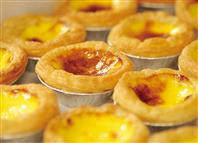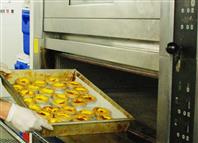At 2:30 pm every day, a savoury smell assails the nostrils and lingers in the S.H. Ho College canteen. The Portuguese custard tarts (pastéis de nata) are out of the oven, telling you tea-time is just around the corner.
With a diameter of less than two inches, the delicate custard tart has a flaky crust made out of densely layered pastry. According to Mr. Cheung, the canteen baker, the secret of making a savoury pastry lies in the choice of butter and flour, as well as kneading skills. The dough should be rolled and folded until it forms a 64-layer pastry. Too many layers will make the crust too hard, and too few, not crispy enough. The creamy and melt-in-the-mouth custard, a perfect match with the crispy crust, is a mixture of egg, sugar and cream. The tart is baked until the top turns brown. Whether the taste and appearance are good depends on the portion of different ingredients, the texture of the dough after kneading, the baking time and temperature.
Nowadays, people are more concerned about their health so sweet snacks always promote themselves as low-sugar and healthy. But the tart still stands firm for the distinguishing feature of a dessert—sweet and sugary. When you are having a tart, do you prefer to have one with a hard crust and low-sugar? And would that creation still count as a pastel de nata?



































































































































































Social Bookmarks